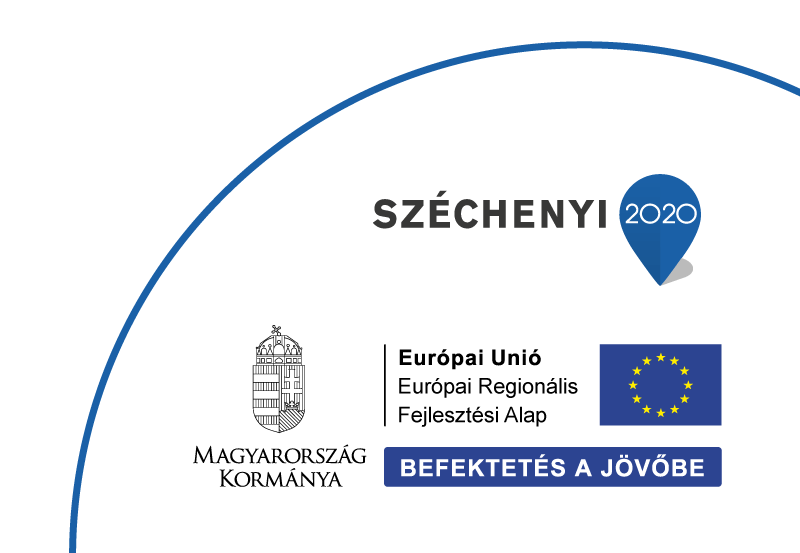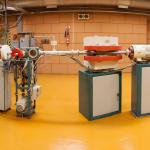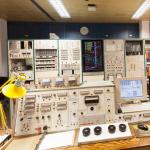 |
Kategória | Gyorsító |
| Típus | MGC-20 | |
| Szervezeti egység | ||
| Eszközfelelős | ||
| Üzembentartó | Atomki | |
| Felhasználás | Kutatás, Szolgáltatás | |
| Érték | Nagy értékű | |
| Kutatási témák |
|
|
| Publikációk |
ATOMKI operates the major particle accelerator in Hungary. The MGC-20 cyclotron has been delivering accelerated particle beams for both basic and applied research, medical and industrial applications as well since the end of 1985. The cyclotron can accelerate particle beams from proton to alpha with variable energies and in a broad intensity range. Using its sophisticated external beam transport system equipped with advanced beam diagnostics and instrumentation, it can be flexibly adapted to the diverse requirements of different research and application projects, making it a real multidisciplinary research tool.
The MGC-20 cyclotron of ATOMKI has been the major particle accelerator facility in Hungary since it started operation in 1985. It is a variable energy compact machine which can accelerate particle beams from proton to alpha. For about two decades it was the only cyclotron type accelerator in the country and was used for various research and application programs. In recent years several new dedicated PET-isotope (Positron Emission Tomography) cyclotrons were put into operation in Hungary with comparable proton and deuteron final beam energies. Although these new machines are superior in beam intensity and economics of operation, the MGC-20 cyclotron is still the most flexible accelerator facility for research and non-routine application tasks. Its sophisticated external beam transport system with advanced beam diagnostics and instrumentation, combined with the broad range of variable beam parameters makes it a unique tool for numerous programs.
Particle beams
- Proton energy: 2.5 - 18 MeV, intensity: 40 µA
- Deuteron energy: 1 - 10 MeV, intensity: 40 µA
- 3He++ energy: 4 - 27 MeV, intensity: 10 µA
- Alpha energy: 2 - 20 MeV, intensity: 20 µA
Energy spread of the extracted beam: < 3x10-3
Energy spread of the analized beam: < 10-3
Beam emittance
- horizontal: 30*Pi mm*mrad
- vertical: 15*Pi mm*mrad
External target locations: 8 horizontal, 1 vertical
Milestones in the cyclotron operation
- 1980-83 Design and purchase (supported by IAEA - International Atomic Energy Agency)
- 1984-85 Installation and commissioning
- 1985 November: Start of operation
- 1986 Start of SPECT-isotope production
- 1987 Start of bio-medical and agro-biological applications with fast neutrons
- 1994 Start of PET-isotope production
- 1997 Start of radiation damage studies
- 1997-99 Reconstruction project (supported by IAEA Technical Co-operation Project HUN/4/013)
- 2002 Start of Thin Layer Activation (TLA) program for wear studies
- 2003 Renewal of the RF-system of the cyclotron (supported by the Hungarian Academy of Sciences)
- 2005 Start of CVD Diamond irradiations
- 2010 Renewal of the NMR (Nuclear Magnetic Resonance) based magnetic field stabilization system of the analyzing magnet
- 2014 Replacement of the tube based driver amplifier in the RF-system of the cyclotron with a home designed solid-state 2 x 2.4 kW power amplifier
Beamlines:
- 2 Neutron source with Beryllium target
- 2a External beam (thin layer activation) and measurements in vacuum chamber (nuclear reaction cross section)
- 3 Nuclear physics
- 4 Scattering chamber, nuclear physics
- 5 Quasi-monoenergetic fast neutron source
- 5a Magnetic spectrometer, nuclear physics
- 6 Horizontal beam line for isotope production
- 7 Vertical beam line for isotope production
- 9 Astrophysics
Available infrastructure:
- Radiochemical laboratory
- Gamma spectrometers
Videos:
Publications:
-
Z. Kormány, I. Ander:
New digital NMR system for an old analyzing magnet
In: Petit-Jean-Genaz (szerk.) 2nd International Particle Accelerator Conference. IPAC 2011 (2011) pp. 1215-1217. -
Z. Kormány, I. Ander, P. Kovács, T. Lakatos, I. Szűcs:
Renewal and automation of the atomki MGC-20 cyclotron
In: JL. Laclare, W. Mitaroff, C. Petit-Jean-Genaz (szerk.) EPAC 2000. 7th European Accelerator Conference. Vienna, 26 to 30 June 2000. Proceedings. (2000) pp. 1844-1846. -
S. Biri, I. K. Vajda, P. Hajdu, R. Rácz, A. Csík, Z. Kormány, Z. Perduk, F. Kocsis, I. Rajta:
The Atomki Accelerator Centre
European Physical Journal Plus 136 (2021) 247.
Development projects:
- TKP2021-NKTA-42; Nuclear technology research and development based on particle accelerators
- GINOP-2.2.1-15-2016-00012; eMFC: Exploration and development of a novel control software framework for research infrastructures
Scientific projects:
- ChETEC-INFRA: Chemical Elements as Tracers of the Evolution of the Cosmos – Infrastructures for Nuclear Astrophysics
- EURO-LABS: EUROpean Laboratories for Accelerator Based Science
- TKP2021-NKTA-42; Nuclear technology research and development based on particle accelerators
- GINOP-2.3.3-15-2016-00034; EGZOMAG: Study of exotic nuclear phenomena at Atomki and ESFRI roadmap institutes
- GINOP-2.2.1-15-2016-00012; eMFC: Exploration and development of a novel control software framework for research infrastructures
- TÁMOP-4.2.6-15/1-2015-0001; COMPLEX INNOVATION - Health industry network for efficiency improvement
- VKSZ_14-1-2015-0021; NNKP: Participation of MTA Atomki in the National Nuclear Research Program of Hungary
- Magyar-indiai TéT együttműködés; Preparation of 163-Ho radioactive source for deermination of mass of neutrino
- FP7-IDEAS-ERC 203175; ATOMKI-PPROCESS: Nuclear reaction studies relevant to the astrophysical p-process nucleosynthesis
 Magyar
Magyar



